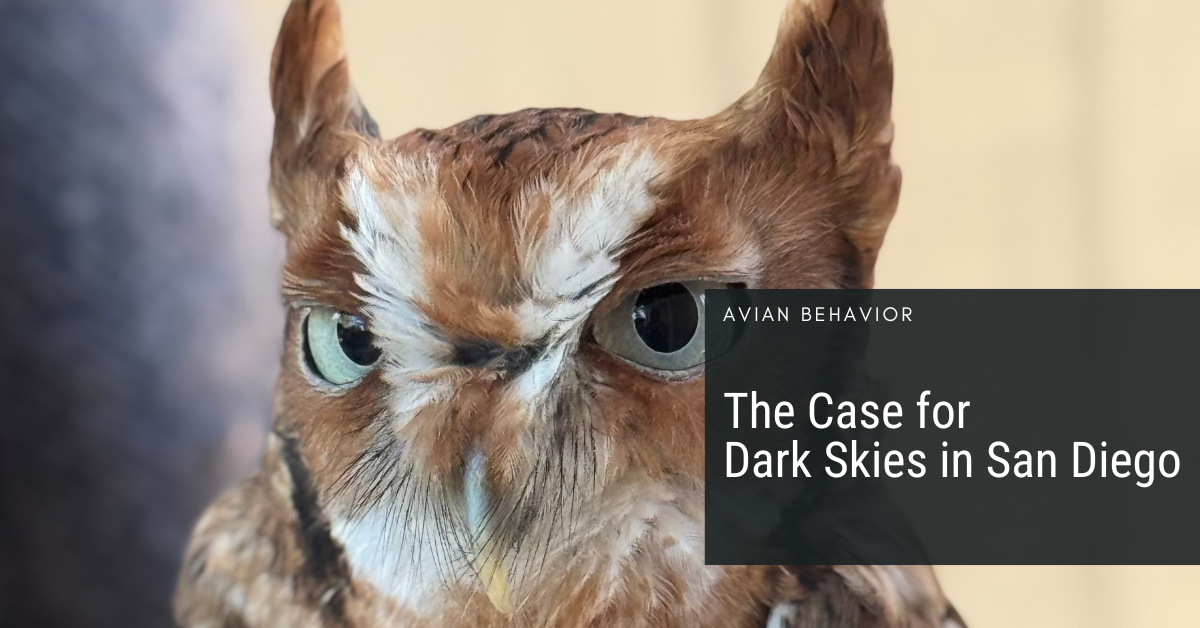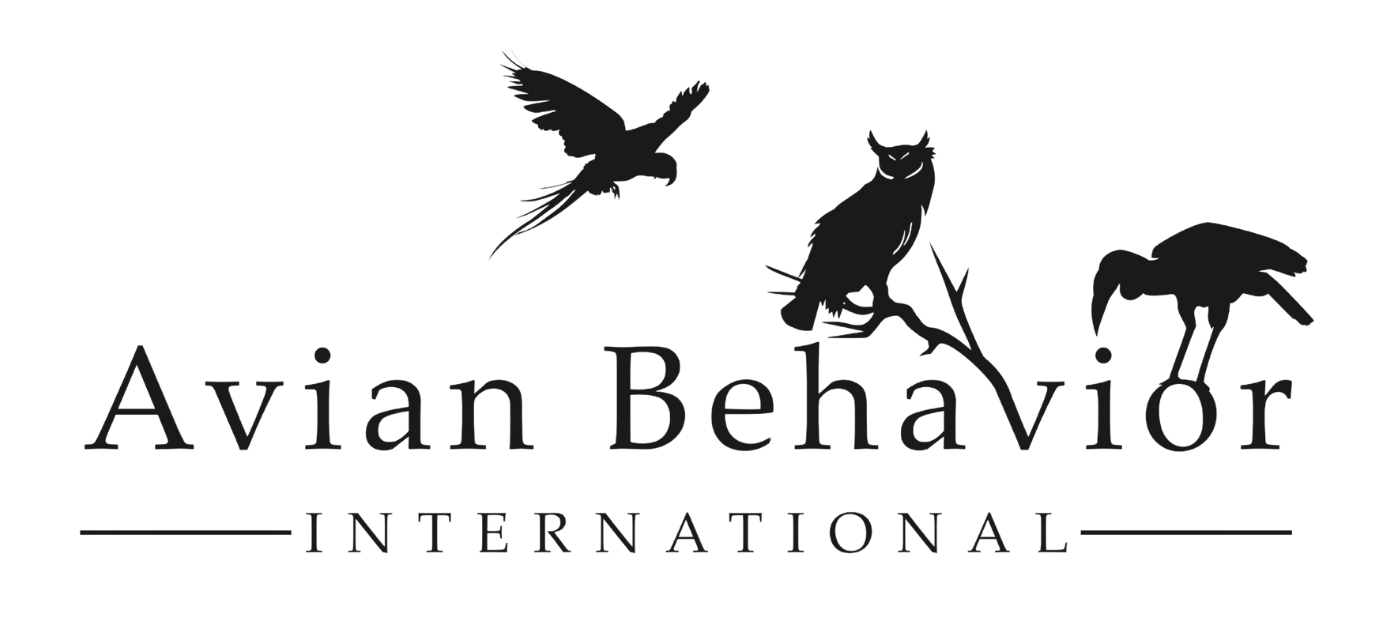
29 Aug Nigel the Screech Owl and the Case for Dark Skies in San Diego
If you’ve ever joined us for a program at Avian Behavior Conservancy, you might have met Nigel, our Eastern Screech Owl. With his soft green eyes and perfectly camouflaged feathers, Nigel often steals the show. But what most people don’t realize is that Nigel represents a much bigger conservation story—one that connects the night sky, bugs, and birds across San Diego County.
Nigel’s Nighttime Menu
Like all screech owls, Nigel depends on a steady diet of nocturnal insects—especially moths. Moths, beetles, and other arthropods make up a huge portion of screech owl diet, fueling their nighttime hunting adventures. But these insects aren’t just owl food. They pollinate native plants, recycle nutrients, and provide food for countless other birds, reptiles, and mammals. In short, insects are the unsung heroes of healthy ecosystems.
When the Lights Come On, the Bugs Disappear
Unfortunately, artificial light at night is disrupting this balance. Streetlights, house lights, and parking lot lights attract insects, pulling them away from their natural habitats. Many become disoriented, circling lights until exhaustion—or predators—claim them. Others lose their ability to navigate, reproduce, or feed properly.
The result? Fewer moths and insects in the wild, which means less food for Nigel and other birds that depend on them. For insect-eating birds—especially those feeding hungry chicks in spring—this decline can be devastating.
Dark Skies International
We have attended two wonderful Dark Skies International events in San Diego County this year, most recently in August. It was a spectacular scene, with many local astronomers, bat biologists, and other local scientists. Did you know that the Julian Dark Sky Network is an organization whose mission is to preserve the dark skies of Julian, California? This is an important mission right here in San Diego County with an important conservation goal.
Birds and the Night Sky
It’s not just about bugs. Many birds, including thrushes, sparrows, and raptors, passing through San Diego on migration, rely on the stars and moon to navigate at night. Artificial lights can throw them off course, leading to collisions with buildings or dangerous detours that waste precious energy.
When we protect the dark sky, we’re not only giving Nigel his moths back—we’re giving migratory birds a safer passage across our region.
What You Can Do at Home
The good news is that dark sky conservation is something we can all take part in. A few simple steps make a huge difference:
- Shield your outdoor lights so they point down, not up.
- Use warm-colored bulbs instead of bright white LEDs.
- Turn off unnecessary lights at night—especially during peak migration seasons in spring and fall.
Each action helps restore the natural rhythms of our nights, bringing balance back to insects, birds, and the ecosystems that depend on them.
Nigel’s Message
Nigel may be small, but his story is huge. By protecting the dark skies of San Diego County, we’re protecting moths, insects, migratory birds, and owls like him. And in doing so, we safeguard the wonder of our nights—for wildlife and for all of us who pause to look up at the stars.

